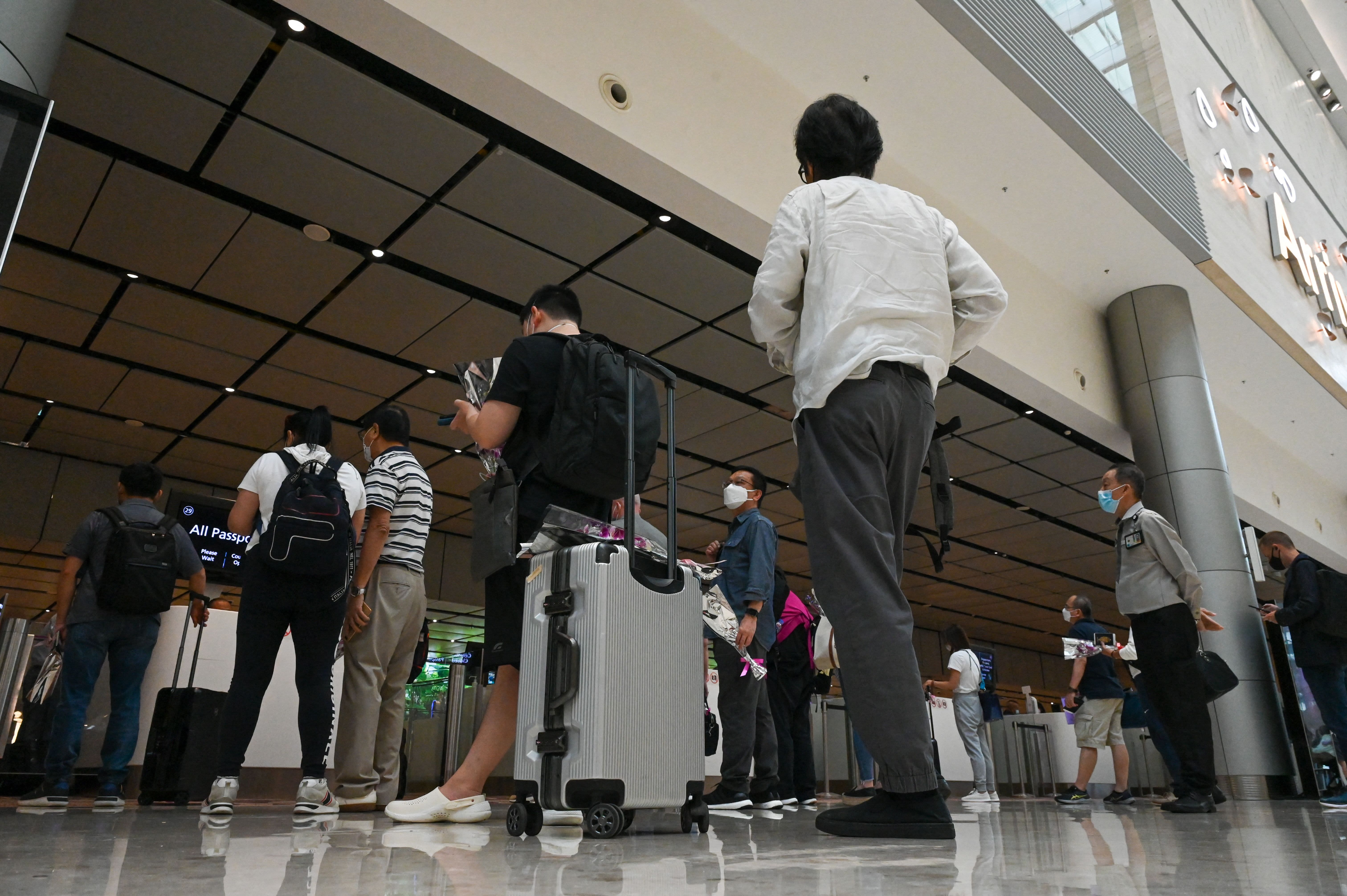Biometric immigration processing is now available at Changi Airport in Singapore, eliminating the need for passports.

Passengers arriving in Singapore's Changi Airport from Monday won't need to show their passports to clear immigration.
According to the Immigration & Checkpoints Authority, Singapore residents arriving in Terminal 3 who use the designated lanes for the country's new "token-less clearance" program can enter the country using eye and facial biometric processing instead of passports.
Citizens, permanent residents, and long-term pass holders are considered residents as per the program's definition.
By September, the program will be implemented at all terminals at Changi Airport and by December 2024, it will also be available at Seletar Airport and Marina Bay Cruise Centre, as per Singapore authorities.
Who is eligible?
Under the new immigration program, Singapore residents can travel without showing their passports at air and sea checkpoints.

Eligible foreigners can participate in the program, but they must enroll their biometrics at manual immigration counters when leaving Singapore, as per Singapore's Immigration & Checkpoints Authority.
According to authorities, children under six years old are not allowed to use biometric clearance or automated lanes to clear immigration.
A 'paradigm shift' at the borders
Singapore's "New Clearance Concept," announced in May, includes passport-less immigration clearance as part of its effort to modernize and automate immigration services.
The implementation of a new concept, referred to as a "paradigm shift in border clearance," marks the end of the human-led passport checks process, which the city-state has been gradually phasing out for some time.
By early 2026, immigration officials anticipate that 95% of travelers will be able to clear immigration through automated lanes. However, the remaining 5% are ineligible, including young children.
Biometric processing is a key component of Singapore's efforts to enhance its border security and improve travelers' experiences, as stated by authorities. It is predicted that biometric processing will decrease immigration wait times by 40%, as announced by immigration officials.
In the next three to five years, approximately 85% of airports will implement biometric processing, according to Sumesh Patel, the Asia-Pacific president of SITA, as stated in "Squawk Box Asia" in March.
Two types of passport-free clearances
Biometric-only processing is the second form of passport-less immigration clearance now available in Singapore.
In May, travelers were granted permission to utilize self-generated QR codes to enter and exit Singapore at two land checkpoints linking Singapore and Malaysia.
Land borders require a token, such as a QR-code, because authorities do not have prior knowledge of who intends to enter or exit Singapore.
The city-state aims to modernize its border control procedures with the help of two programs to manage the increasing traveler volume and address the aging workforce.
Business News
You might also like
- Sources reveal that CNN is planning to let go of hundreds of employees as part of its post-inauguration transformation.
- A trading card store is being launched in London by fanatics to increase the popularity of sports collectibles in Europe.
- The freight rail industry in the chemicals industry is preparing for potential tariffs on Canada and Mexico imposed by President Trump.
- Stellantis chairman outlines planned U.S. investments for Jeep, Ram to Trump.
- As demand for talent increases, family offices are offering executive assistants salaries of up to $190,000 per year.



















